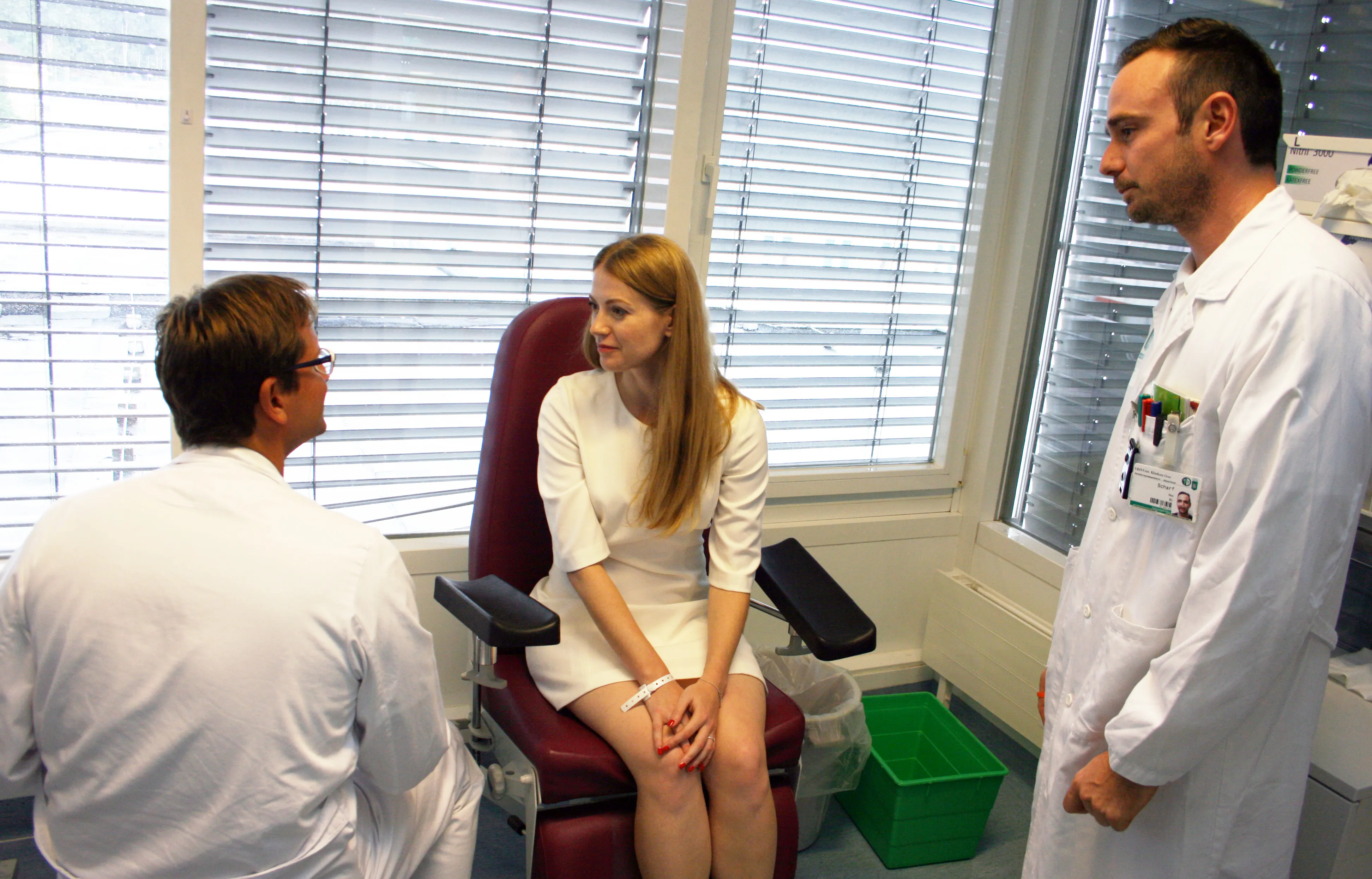Frequently asked questions by the health professionals
» How do PET/CT radiation doses compare with doses from other examinations?
» Can repeated radiological procedures on the same patient increase the radiation risk?
» Does diabetes have any additional radiation risk issues in PET scanning?
» Can a patient have a CT scan, diagnostic X-ray examination or MRI scan on the same day as the PET/CT scan?
» After a PET scan, how long does a patient need to wait before using public transportation without setting off radiation detectors?
» Does a patient need to restrict his or her activities after a PET/CT scan?
» Are any additional restrictions required for a patient’s behaviour for positron emitting tracers other than 18F-FDG?
» How do PET/CT radiation doses compare with doses from other examinations?
A PET/CT test has two components: a PET scan and a CT, which are done together. The radiation exposure from CT has a very wide range depending on the type of the test, the area of the body scanned and the purpose of the test. In its simplest form, a CT scan is used only for the localization of abnormalities seen on a PET scan (non-diagnostic scan). The radiation dose from such a scan can be low (e.g. an effective dose of about 7 mSv for a whole body study). However, the effective dose from a high resolution diagnostic scan can be quite high (up to 30 mSv for a whole body CT scan).
The effective dose from a PET scan is modest and depends on the activity of the injected FDG (18F-Fluoro deoxyglucose) and is typically 8 mSv for adults using 400 MBq and is the same whether a part of the body or the whole body is imaged.
Major reductions in radiation doses from PET/CT scans can be achieved by modifying the acquisition parameters for CT. Conventional radiographic examinations such as chest, abdominal and bone X-rays also give a radiation dose but only a fraction of that resulting from a CT examination. Examinations such as ultrasonography and magnetic resonance (MR) imaging do not involve exposure to ionizing radiation.
» Do repeat radiological procedures on the same patient increase the radiation risk?
Yes.
Radiation effects are known to be cumulative in nature. However, the repair mechanisms in the body are quite active and spacing the procedures with suitable time intervals helps reduce radiation effects, as is done in radiotherapy. At the moment there is no formal mechanism to record and track cumulative radiation exposure to a patient, as is done for staff. Patients are advised in their own interest to let all physicians know about their previous radiological examinations.
» Does diabetes have any additional radiation risk issues in PET scanning?
No.
Although a small amount of radioactive glucose is injected for the PET examination, this will not affect the diabetes. It is important, however, that the PET imaging team is aware of the patient’s diabetes. This ensures that the best results can be achieved from the scan and unnecessary radiation dose is avoided.
» Can a patient have a CT scan, diagnostic X-ray examination or MRI scan on the same day as the PET/CT scan?
The PET scan will not affect the performance of these investigations.
However, if other imaging tests are also planned, it is important to avoid any unnecessary duplication of the tests by ensuring that all physicians involved in the patient’s care are aware of the imaging tests being performed on the patient.
» After a PET scan, how long does a patient need to wait before using public transportation without setting off radiation detectors?
There is no danger to other travelers on public transportation following a PET scan.
In some countries, radiation detectors in public areas and specific locations such as airports can be inadvertently activated by even small amounts of radiation. Radiation detectors are now more sensitive than ever before. Nonetheless, the isotopes used for PET imaging decay so rapidly that after only 24 hours there is no danger of activating a radiation detector. It may be a good idea for the patient to obtain a document from the PET Centre stating that they have undergone a PET/CT scan, in case they are questioned.
» Does a patient need to restrict his or her activities after a PET/CT scan?
No.
Although the scan involves injection of a radioactive substance, which will lead to radiation exposure of persons in his/her vicinity, the amount of radiation coming from the patient following the scan is low. The patient can carry out all routine activities without any risk to others, with the consideration of limiting contact with pregnant women and children .
» Are any additional restrictions required for a patient’s behavior for positron emitting tracers other than 18F-FDG?
18F-FDG is by far the most commonly used radiotracer. Other tracers with shorter half-lives (e.g. 82Rubidium, 13N-ammonia, 11C and 15O) decay much faster than FDG, and therefore require no additional restrictions. Radiation dose rates from non-fluorine tracers with longer half-lives have not been established in clinical use and are used very rarely in research studies. Individualized instructions would be required if these tracers are used.
